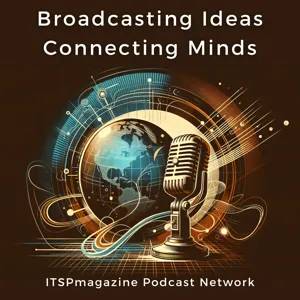Guest: Dr. Joseph Dituri, Clinical Researcher, U. S. Navy Saturation Diving Officer (Ret), World Record Holder (Living underwater)
On Linkedin | https://www.linkedin.com/in/joseph-dituri-ph-d-5099789/
On Twitter | https://twitter.com/drdeepsea?lang=en
On Instagram | https://www.instagram.com/drdeepsea/
Website | https://drdeepsea.com/
_____________________________
Host: Marco Ciappelli, Co-Founder at ITSPmagazine [@ITSPmagazine] and Host of Redefining Society Podcast & Audio Signals Podcast
On ITSPmagazine | https://www.itspmagazine.com/itspmagazine-podcast-radio-hosts/marco-ciappelli
_____________________________
This Episode’s Sponsors
Are you interested in sponsoring an ITSPmagazine Channel?
👉 https://www.itspmagazine.com/sponsor-the-itspmagazine-podcast-network
_____________________________
Episode Introduction
Hello, listeners and readers! Welcome back to the Audio Signals Podcast, where we explore the intersection of technology, storytelling, and the human spirit. I'm your host, Marco Ciappelli, and today we embark on an extraordinary journey beneath the waves with our special guest, Dr. Joseph Dituri.
In this episode, "Living Undersea for 100 Days with Dr. Joseph Dituri," we dive deep into a narrative that merges the frontiers of science and the art of storytelling. As you've journeyed with us through our previous episodes, you know we're passionate about not just the stories themselves but the storytellers who bring them to life. Today's story is about pushing boundaries, exploring the unknown, and the profound implications of such endeavors on society and our collective future.
Dr. Dituri, a retired United States Navy diver and special operations officer, shares his incredible experience of living underwater for a full 100 days. This feat isn't just about endurance or adventure; it's a testament to human curiosity and our relentless pursuit of knowledge. After retiring from a distinguished military career, Dr. Dituri turned his focus to biomedical engineering, specifically addressing the challenges of traumatic brain injuries in service members. His undersea mission, however, goes beyond medical research. It's a clarion call to explore our oceans, understand their mysteries, and recognize their critical role in our planet's health.
As we navigate through Dr. Dituri's journey, we uncover the stark contrasts in funding and attention between space exploration and oceanic research. Despite oceans covering 70% of our planet and being vital to our survival, they remain largely unexplored and undervalued. Dr. Dituri's endeavor under the waves is a stark reminder of the untapped potential lying in the depths of our oceans – potential that could hold the keys to solving some of humanity's most pressing challenges.
During his time underwater, Dr. Dituri engaged with over 5,000 students across 15 countries, not just sharing his knowledge but igniting a spark of curiosity and wonder in the next generation. His experiences highlight the importance of storytelling in science, making complex concepts accessible and exciting, and inspiring future explorers and scientists.
Join us in this captivating episode as we unravel the stories of the deep, the significance of undersea exploration, and how Dr. Dituri's journey is shaping the narrative around oceanic research and its critical role in our world. This is more than just a tale of adventure; it's a story about our relationship with the vast, mysterious world beneath the waves and how understanding it better can change our future.
_____________________________
Resources
Mission complete: USF’s Dr. Deep Sea resurfaces after living underwater for 100 days, setting new world record: https://www.usf.edu/news/2023/mission-complete-usfs-dr-deep-sea-resurfaces-after-living-underwater-for-100-days-setting-new-world-record.aspx
Florida scientist resurfaces after living underwater for record 100 days: https://www.pbs.org/newshour/science/florida-scientist-resurfaces-after-living-underwater-for-record-100-days
How (and why) this man plans to live underwater for 100 days: https://www.npr.org/2023/03/07/1161325332/joseph-dituri-science-dr-deep-sea-underwater-marine
Meet 'Dr. Deep Sea,' the scientist who broke the record for the longest time living underwater: https://www.livescience.com/planet-earth/rivers-oceans/meet-dr-deep-sea-the-scientist-who-broke-the-record-for-the-longest-time-living-underwater
_____________________________
For more podcast stories from Audio Signals:
https://www.itspmagazine.com/audio-signals
Watch the video version on-demand on YouTube: https://www.youtube.com/playlist?list=PLnYu0psdcllS0aVY7qlwHxX3uiN7tqqsy
Are you interested in sponsoring an ITSPmagazine Channel?
👉 https://www.itspmagazine.com/sponsor-the-itspmagazine-podcast-network














